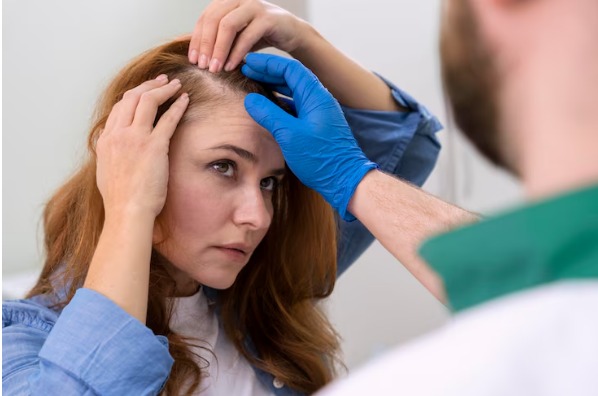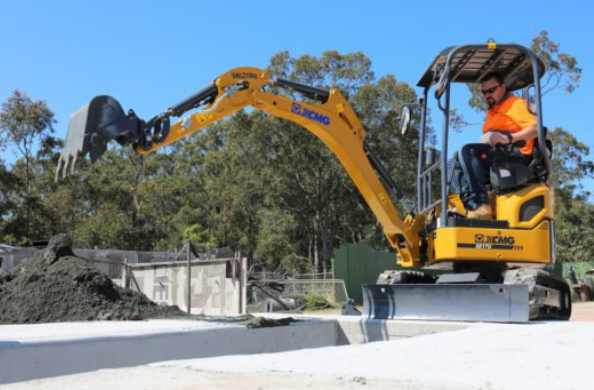
Hair loss is a common concern that affects both men and women, but the patterns, causes, and treatment approaches differ significantly between genders. While male hair transplant procedures are well-documented and frequently discussed, hair loss in women can be more complex and emotionally challenging. This makes choosing the right specialist for hair transplant for female patients not just important—but essential.
Selecting a qualified and experienced specialist for female hair restoration ensures that the treatment addresses your unique hair loss pattern, preserves existing hair, and delivers natural-looking results. Below, we explore key factors to consider when choosing a clinic or surgeon for female hair loss treatment.
Understanding Female Hair Loss
Before exploring how to choose a specialist, it’s crucial to understand how female hair loss differs from that in men.
Hair Loss Patterns
- Men: Typically experience a receding hairline and balding at the crown due to androgenetic alopecia.
- Women: Often suffer from diffuse thinning across the scalp without a receding hairline.
This difference makes treating female hair loss more intricate, as donor areas may also be affected, and results must focus on increasing overall density rather than simply reconstructing the hairline.
Choose a Specialist Experienced in Female Hair Transplants
Not all hair transplant surgeons are equally experienced with female patients. Since hair transplant for female clients requires different planning and execution than male hair transplant, it’s essential to select a clinic that showcases a track record of successful outcomes with women.
Ask the clinic:
- How many female patients have you treated?
- Can I see before-and-after photos of women you’ve helped?
- What percentage of your clientele is female?
Specialists who regularly perform procedures on women will better understand the subtleties of female hair density, styling preferences, and scalp visibility concerns.
Review Their Diagnostic Approach
A thorough evaluation is the foundation of effective treatment. Unlike in men, where the cause of hair loss is often genetic, women may lose hair due to various underlying conditions such as:
- Hormonal imbalance
- Iron deficiency
- Thyroid disorders
- Autoimmune diseases
- Stress or trauma
A qualified hair loss specialist will not rush into surgical recommendations. Instead, they will:
- Conduct blood tests
- Perform scalp examinations
- Discuss lifestyle, medical history, and medications
Clinics that skip this diagnostic phase may not deliver sustainable results.
Check for Non-Surgical Options Offered
Surgery may not always be the best or first option for women experiencing hair loss. The right clinic should offer a range of non-surgical treatments, including:
- PRP (Platelet-Rich Plasma) therapy
- Low-Level Laser Therapy (LLLT)
- Topical or oral medications
By choosing a specialist who provides both surgical and non-surgical solutions, you can explore the most effective and least invasive options first, with surgery as a last resort if needed.
Understand the Hair Transplant Technique Used
Not all transplant techniques are equally effective or suitable for women. The two most common methods are:
- FUE (Follicular Unit Extraction): Preferred for female patients who wish to avoid a visible scar, as it does not require a strip of scalp to be removed.
- FUT (Follicular Unit Transplantation): Involves removing a strip of scalp, which can leave a linear scar but may be suitable in certain cases where many grafts are needed.
Women often prefer FUE as it allows for minimal disruption to existing hair and does not require full head shaving. Always confirm whether the clinic has experience performing female-specific FUE procedures, where only a small, hidden donor area is trimmed.
Consider Customised Hairline Design and Density Planning
In male hair transplant procedures, reconstructing the hairline is usually a major focus. However, female patients typically retain their hairline and instead seek improved volume.
A skilled specialist will:
- Avoid aggressive hairline changes
- Prioritise natural hair direction and density
- Strategically place grafts between existing hair without damaging them
Ask your specialist about their approach to density design and whether they use magnification tools like microscopes during graft placement for precision.
Look for Transparent Consultations and Realistic Expectations
One of the key red flags is overpromising results. An ethical specialist will:
- Set realistic expectations about the number of grafts achievable
- Discuss the limitations of surgery for diffuse thinning
- Provide a step-by-step breakdown of the recovery and results timeline
The consultation should be educational and pressure-free. Avoid clinics that attempt to upsell or push you into surgery without thoroughly exploring your case.
Evaluate Clinic Hygiene and Accreditation
Ensure the clinic meets national healthcare standards and is accredited by relevant surgical bodies. A certified facility will follow proper protocols, including:
- Sterile instruments and clean surgical suites
- Experienced surgical assistants and nursing staff
- Post-op monitoring and follow-up care
When choosing a specialist for hair transplant for female needs, don’t hesitate to ask for a tour of the facility or to verify their certifications.
Ask About Aftercare and Ongoing Support
Recovery after a hair transplant is a critical phase that affects final results. A reputable clinic will offer:
- Detailed aftercare instructions
- Regular follow-up appointments
- Access to your surgeon for any post-op concerns
Ongoing support is especially important for women, who may require complementary treatments like PRP or medical therapy to enhance and maintain results.
Conclusion
Hair restoration is deeply personal and can have a profound impact on confidence and quality of life. For women, choosing the right specialist for hair loss treatment is not just about surgical skill—it’s about empathy, customisation, and a holistic approach.
While the male hair transplant industry is more widely discussed, clinics are increasingly recognising the importance of tailored care for female clients. By selecting a specialist who understands the unique biological and emotional considerations of female hair loss, you can take a confident step toward reclaiming your hair and your self-esteem.
Whether you’re seeking subtle improvements or more extensive restoration, begin with a comprehensive consultation and explore all treatment options. Your hair—and your peace of mind—deserve nothing less.
Choosing the right beard FUE specialist is essential to achieving a natural, symmetrical beard without visible scarring or complications. This article explores key tips for selecting a qualified professional, what to look for during your consultation, and why Sydney has become a leading destination for this growing procedure.
What Is Beard FUE?
Beard Follicular Unit Extraction (FUE) is a type of hair transplant that involves removing individual hair follicles—typically from the back or sides of the scalp—and implanting them into the beard area. It’s a minimally invasive technique designed to restore facial hair density and improve beard symmetry.
The procedure has gained popularity due to its natural results, minimal downtime, and ability to customise beard shape according to the client’s preferences. Because facial hair grows differently from scalp hair, a skilled specialist is required to ensure correct angling, density, and placement.
Why Beard Transplants Are Gaining Popularity
Beard styles continue to trend globally, and many men want fuller facial hair but are held back by genetics, hormonal imbalances, or scarring. With the increasing success of hair restoration in Sydney, more individuals are turning to beard transplants as a long-term, confidence-boosting solution.
Benefits of beard FUE include:
- Permanent results
- Customisable shapes and styles
- Ability to conceal facial scars
- Natural growth patterns
While these outcomes are appealing, the key lies in choosing a specialist with experience in facial hair transplantation.
Tip 1: Look for Facial Hair Transplant Experience
Not all hair transplant surgeons specialise in beard FUE. Transplanting scalp hair into the face requires precision and a deep understanding of facial hair growth patterns.
When researching clinics for beard FUE in Sydney, look specifically for:
- A portfolio of beard transplant before and after images
- Testimonials from past beard FUE clients
- Experience with diverse facial hair types and ethnicities
An experienced specialist will understand how to replicate natural beard density and direction, resulting in a seamless, realistic look.
Tip 2: Prioritise Natural Aesthetics
A successful beard transplant should be indistinguishable from natural facial hair. This means the grafts must be placed at the correct angle and direction to match your existing growth.
Ask potential specialists how they plan the hairline of the beard and whether they account for:
- Symmetry between both sides of the face
- Transition from thicker to thinner areas (e.g., from the chin to the cheeks)
- Individual preferences regarding style (goatee, full beard, stubble, etc.)
You can also request to see before and after examples of patients with similar facial shapes or hair textures to yours.
Tip 3: Ensure the Clinic Offers Personalised Consultations
The best providers of hair restoration in Sydney offer in-depth consultations before scheduling any procedures. During this session, a reputable beard FUE specialist should:
- Assess your facial hair goals
- Examine donor hair availability on your scalp
- Discuss the number of grafts required
- Set realistic expectations for growth and density
This is also the time to address any medical concerns or previous surgeries. Transparent communication is a strong indicator of professional care.
Tip 4: Check for Accreditation and Training
In Australia, cosmetic and hair transplant procedures should be performed by accredited practitioners with proper training. Look for affiliations with:
- The Australasian College of Cosmetic Surgery and Medicine (ACCSM)
- The International Society of Hair Restoration Surgery (ISHRS)
- The Australian Health Practitioner Regulation Agency (AHPRA)
These affiliations suggest that the clinic meets national and international safety and ethical standards.
Tip 5: Inquire About the Technology Used
Modern FUE tools are more advanced than ever, with some clinics using robotic assistance, high-resolution microscopes, and precision instruments for graft placement. The technology used can influence:
- The accuracy of extraction
- The survival rate of grafts
- The recovery time
Clinics that invest in advanced tools generally produce more consistent and natural results for beard FUE in Sydney.
Tip 6: Understand the Recovery and Aftercare
Even though beard FUE is minimally invasive, proper aftercare is critical for ensuring optimal results. Ask about:
- Post-procedure instructions (e.g., washing your face, avoiding shaving)
- Expected timeline for shedding and regrowth
- Follow-up appointments and touch-ups if needed
A high-quality hair restoration clinic in Sydney will provide ongoing support and detailed care instructions to guide you through the recovery process.
Tip 7: Consider Cost and Value
Cost is naturally a consideration when booking any cosmetic procedure. Beard FUE prices can vary depending on:
- The number of grafts required
- The experience of the surgeon
- The clinic’s reputation and location
It’s important not to choose based on price alone. Clinics that charge significantly less may compromise on quality, hygiene, or aftercare. A well-executed beard transplant should last a lifetime, making it a worthwhile investment in your appearance and confidence.
Tip 8: Read Reviews and Speak with Former Clients
Online reviews and third-party platforms such as Google and RealSelf can provide honest insights into patient experiences. Look for consistent comments regarding:
- Professionalism
- Results satisfaction
- Aftercare support
Some clinics will also offer the opportunity to speak directly with previous patients or provide client video testimonials. These conversations can give you realistic insights into what to expect.
Conclusion
Choosing a specialist for beard FUE in Sydney is about more than just credentials—it’s about finding a professional who understands your aesthetic goals and has the technical skill to bring them to life. Beard transplants require a deep understanding of facial symmetry, hair angle, and texture to produce results that look completely natural.
With Sydney becoming a leading destination for hair restoration, patients now have access to world-class treatment options in modern, well-equipped clinics. Whether you are looking to fix patchy growth, create a sculpted beard line, or restore hair lost due to scarring, beard FUE is a lasting solution.
Before making your decision, take the time to research thoroughly, consult multiple providers, and ask detailed questions about their process, results, and patient care philosophy. With the right specialist, your new beard can be a permanent boost to your style and self-esteem.
Selecting a qualified and experienced specialist for female hair restoration ensures that the treatment addresses your unique hair loss pattern, preserves existing hair, and delivers natural-looking results. Below, we explore key factors to consider when choosing a clinic or surgeon for female hair loss treatment.
Understanding Female Hair Loss
Before exploring how to choose a specialist, it’s crucial to understand how female hair loss differs from that in men.
Hair Loss Patterns
- Men: Typically experience a receding hairline and balding at the crown due to androgenetic alopecia.
- Women: Often suffer from diffuse thinning across the scalp without a receding hairline.
This difference makes treating female hair loss more intricate, as donor areas may also be affected, and results must focus on increasing overall density rather than simply reconstructing the hairline.
Choose a Specialist Experienced in Female Hair Transplants
Not all hair transplant surgeons are equally experienced with female patients. Since hair transplant for female clients requires different planning and execution than male hair transplant, it’s essential to select a clinic that showcases a track record of successful outcomes with women.
Ask the clinic:
- How many female patients have you treated?
- Can I see before-and-after photos of women you’ve helped?
- What percentage of your clientele is female?
Specialists who regularly perform procedures on women will better understand the subtleties of female hair density, styling preferences, and scalp visibility concerns.
Review Their Diagnostic Approach
A thorough evaluation is the foundation of effective treatment. Unlike in men, where the cause of hair loss is often genetic, women may lose hair due to various underlying conditions such as:
- Hormonal imbalance
- Iron deficiency
- Thyroid disorders
- Autoimmune diseases
- Stress or trauma
A qualified hair loss specialist will not rush into surgical recommendations. Instead, they will:
- Conduct blood tests
- Perform scalp examinations
- Discuss lifestyle, medical history, and medications
Clinics that skip this diagnostic phase may not deliver sustainable results.
Check for Non-Surgical Options Offered
Surgery may not always be the best or first option for women experiencing hair loss. The right clinic should offer a range of non-surgical treatments, including:
- PRP (Platelet-Rich Plasma) therapy
- Low-Level Laser Therapy (LLLT)
- Topical or oral medications
By choosing a specialist who provides both surgical and non-surgical solutions, you can explore the most effective and least invasive options first, with surgery as a last resort if needed.
Understand the Hair Transplant Technique Used
Not all transplant techniques are equally effective or suitable for women. The two most common methods are:
- FUE (Follicular Unit Extraction): Preferred for female patients who wish to avoid a visible scar, as it does not require a strip of scalp to be removed.
- FUT (Follicular Unit Transplantation): Involves removing a strip of scalp, which can leave a linear scar but may be suitable in certain cases where many grafts are needed.
Women often prefer FUE as it allows for minimal disruption to existing hair and does not require full head shaving. Always confirm whether the clinic has experience performing female-specific FUE procedures, where only a small, hidden donor area is trimmed.
Consider Customised Hairline Design and Density Planning
In male hair transplant procedures, reconstructing the hairline is usually a major focus. However, female patients typically retain their hairline and instead seek improved volume.
A skilled specialist will:
- Avoid aggressive hairline changes
- Prioritise natural hair direction and density
- Strategically place grafts between existing hair without damaging them
Ask your specialist about their approach to density design and whether they use magnification tools like microscopes during graft placement for precision.
Look for Transparent Consultations and Realistic Expectations
One of the key red flags is overpromising results. An ethical specialist will:
- Set realistic expectations about the number of grafts achievable
- Discuss the limitations of surgery for diffuse thinning
- Provide a step-by-step breakdown of the recovery and results timeline
The consultation should be educational and pressure-free. Avoid clinics that attempt to upsell or push you into surgery without thoroughly exploring your case.
Evaluate Clinic Hygiene and Accreditation
Ensure the clinic meets national healthcare standards and is accredited by relevant surgical bodies. A certified facility will follow proper protocols, including:
- Sterile instruments and clean surgical suites
- Experienced surgical assistants and nursing staff
- Post-op monitoring and follow-up care
When choosing a specialist for hair transplant for female needs, don’t hesitate to ask for a tour of the facility or to verify their certifications.
Ask About Aftercare and Ongoing Support
Recovery after a hair transplant is a critical phase that affects final results. A reputable clinic will offer:
- Detailed aftercare instructions
- Regular follow-up appointments
- Access to your surgeon for any post-op concerns
Ongoing support is especially important for women, who may require complementary treatments like PRP or medical therapy to enhance and maintain results.
Conclusion
Hair restoration is deeply personal and can have a profound impact on confidence and quality of life. For women, choosing the right specialist for hair loss treatment is not just about surgical skill—it’s about empathy, customisation, and a holistic approach.
While the male hair transplant industry is more widely discussed, clinics are increasingly recognising the importance of tailored care for female clients. By selecting a specialist who understands the unique biological and emotional considerations of female hair loss, you can take a confident step toward reclaiming your hair and your self-esteem.
Whether you’re seeking subtle improvements or more extensive restoration, begin with a comprehensive consultation and explore all treatment options. Your hair—and your peace of mind—deserve nothing less.







